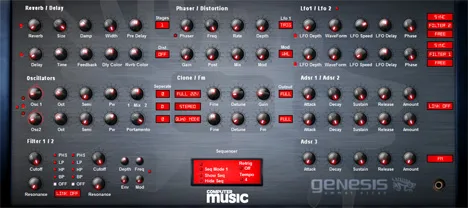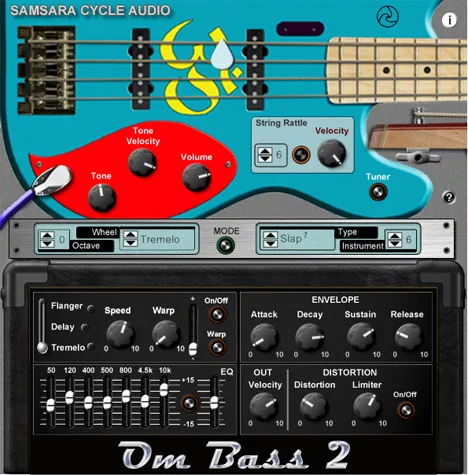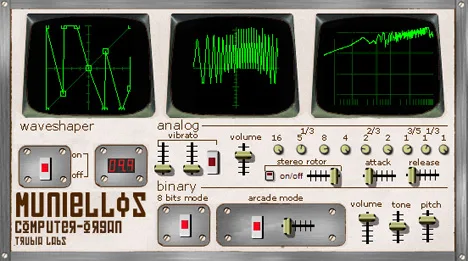Introducing Genesis by Ummet Ozcan: A Synthesizer for Extraordinary Sound
In the world of music production, tools constantly emerge that aim to expand the horizons of creativity. One such innovative synthesizer is Genesis from the renowned producer Ummet Ozcan. This VST plugin is not just another sound source, but a real synthesis studio in your DAW, offering a unique combination of classical principles and modern possibilities. Created as a synthesizer with two oscillators and a dual sequencer, Genesis is designed for creating dynamic, complex, and extraordinary timbres that can form the basis for tracks in a wide variety of genres – from electronic music and trance to film soundtracks and experimental pieces. It invites you to deep sound design, promising unexpected and inspiring results.
The Foundation of Sound: Oscillators and Filters
The heart of any synthesizer is its oscillators, and Genesis offers a powerful base for sound creation.
Two Powerful Oscillators
The plugin is equipped with two oscillators, each of which is an independent sound source. You can use them to create classic subtractive timbres, such as sawtooth basses or square leads. However, the true power is revealed when they interact. Osc2 can be used for frequency modulation of Osc1, allowing you to go far beyond simple waveforms, creating metallic, ringing, or chaotic timbres, ideal for modern electronic genres or sound effects. This capability works both in parallel with the standard operation of the oscillators and instead of them, providing maximum flexibility.
Dynamic Filters
After the oscillators, the signal passes through two filters. These filters allow you to shape the sound spectrum, cutting off unnecessary frequencies or emphasizing resonances. This is a classic sound designer’s tool, which in Genesis is implemented with the possibility of further modulation and routing, allowing the sound to “breathe” and change over time.
Rhythm, Movement, and Sound Evolution
Genesis stands out not only for its synthesis but also for its advanced sequencing and modulation capabilities, which allow the sound to evolve and live.
Innovative Dual Sequencer
Unlike many synthesizers, Genesis has a built-in dual sequencer, which is not just a “note” sequencer. It is capable of generating patterns that can directly control a special ADSR envelope. This opens up unique possibilities for creating complex rhythmic structures, unusual arpeggios, or sequences, where the dynamics and timbre of the sound change according to the sequencer pattern. You can assign sequencer commands to individual events or groups of events, getting maximum control over the sound development.
Synchronized Modulation
Two LFOs in Genesis can synchronize with the sequencer. This means that modulation effects – such as vibrato, tremolo, or filtering – will fit perfectly into the rhythmic pattern created by the sequencer. Precise control of the phase and delay depth of the LFO allows you to finely tune how the modulation interacts with your pattern, creating complex and interesting sound movements.
Flexible ADSR Envelopes
Two ADSR envelopes at the output provide full control over the sound dynamics – attack, decay, sustain, and release. An important feature is the ability to link them or use them independently. This allows you to create both classic piano or pad envelopes, and more complex, multi-layered dynamic changes.
Additional Timbral Capabilities and Effects
The developers of Genesis made sure to provide the user with a complete set of tools for finalizing the sound.
Unique Formant/Comb Filter
In addition to the standard filters, there is a special formant or comb filter. This type of filter can simulate the characteristics of the human voice or create unusual resonant and “metallized” sounds. It can be controlled by a fixed value, LFO, or ADSR, integrating these unique timbres into dynamic patterns.
Built-in Effects Processor
To add space, character, and richness to the sound, Genesis has a high-quality set of built-in effects:
- Reverb: Adds a sense of space and depth.
- Delay: Creates repeating echoes that can be synchronized with the tempo.
- 5-mode Phaser: Five different phase shift modes to create a wide range of “rotating” and “swing” effects.
- 3-mode Distortion: Three distortion modes allow you to add warmth, harmonics, or aggressive saturation to the sound.
- Frequency “Mod”: This effect, which works like a chorus or pseudo-bitcrush, can make the sound thicker or add digital artifacts for lo-fi sound.
Extreme Polyphony and Final Equalizer
With an impressive polyphony of 220 voices, Genesis easily handles even the most complex chords and multi-layered textures, preventing note clipping. At the output, the signal is additionally amplified and formed using a three-band equalizer, which allows you to finely adjust the frequency balance directly in the plugin.
Conclusion
Genesis by Ummet Ozcan is not just a synthesizer for playing presets. It is a deep and flexible tool for sound designers and musicians who want to create unique, dynamic, and evolving sounds and sequences. The combination of powerful oscillators with frequency modulation, innovative dual sequencer, wide modulation capabilities, and high-quality built-in effects makes Genesis an indispensable addition to the arsenal of any producer working on the Windows platform and using the VST format. Try Genesis and discover new possibilities for your music.



